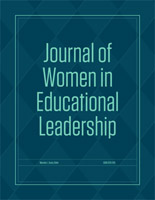Educational Administration, Department of

Journal of Women in Educational Leadership
Date of this Version
10-2010
Document Type
Article
Citation
Journal of Women in Educational Leadership, Vol. 8, No.4-October 2010
Abstract
Greater numbers of Latinas are participating in postsecondary education, however these gains have not resulted in increased graduation rates. This study examines the lived experiences of 36 Latina baccalaureate graduates to gain a deeper understanding of how they achieved this important educational goal.
During the 1990s, analyses of data stressed that Latinos had the lowest postsecondary participation rate of any racial or ethnic group (Cardoza, 1991 ; Martinez-Thome, 1995). A decade later, there is evidence that although participation rates have increased, there are continued disparities in baccalaureate outcomes between Latino and Caucasian college students (President's Advisory Commission on Educational Excellence for Hispanic Americans, 2003; Council of Economic Advisers, 2000; Fry, 2002; Vemez, & Mizell, 2001). Using data from the National Education Longitudinal Study of 1988, Fry (2004) found that, among those who entered the community college as "minimally qualified" for postsecondary education, 16% of Caucasians completed a bachelor's degree compared to only 7% of Latinos. Fry used the same database to indentify a 23% discrepancy in the baccalaureate completion rates of "qualified" Caucasian and Latino students enrolled in non-selective four-year institutions.


Comments
©2010 Pro>Active Publications